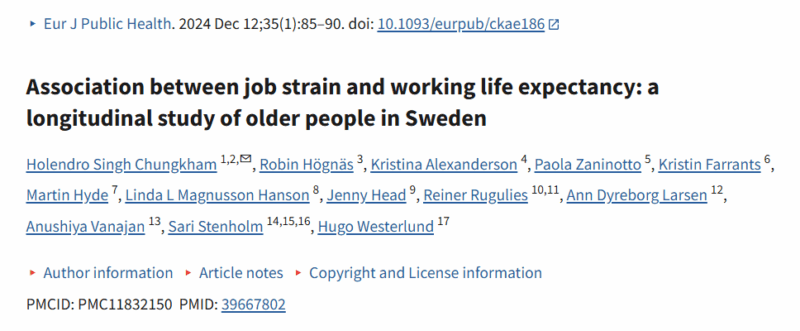Toufic Kachaamy, Chief of Medicine and Director of Gastroenterology at City of Hope, shared a post on LinkedIn:
“Job Strain A Hidden Risk to Health and Longevity
Two weeks ago, I put out a poll about the impact of working conditions on longevity. 74% correctly identified that high stress and low control, also known as job strain, is a large contributor to poor health outcomes.
Thanks for voting.
Job strain is the combination of high demands with low control. It is a well-defined concept in occupational health research, and its impact on well-being is profound.
Research shows that job strain is linked to cardiovascular disease and even early death. The likely pathway is a chronically activated stress response. Elevated cortisol, increased blood pressure, and constant sympathetic nervous system arousal slowly erode the body’s resilience.
The encouraging news is that job strain is a modifiable risk factor. Organizations can reduce it through thoughtful policies and culture shifts:
- Increasing autonomy and decision-making power for employees
- Balancing demands with adequate resources and staffing
- Creating supportive leadership and peer environments
- Encouraging recovery time and healthy boundaries
Addressing job strain is not only about preventing burnout. It is about saving lives. Healthier work environments improve productivity, support longevity, protect cardiovascular health, and allow human beings to flourish.
Read more about job strain here․
How is your organization tackling job strain?”

Title: Association between job strain and working life expectancy: a longitudinal study of older people in Sweden
Journal: The European Journal of Public Health
Authors: Holendro Singh Chungkham, Robin Högnäs, Kristina Alexanderson, Paola Zaninotto, Kristin Farrants, Martin Hyde, Linda L Magnusson Hanson, Jenny Head, Reiner Rugulies, Ann Dyreborg Larsen, Anushiya Vanajan, Sari Stenholm, Hugo Westerlund

More from Toufic Kachaamy on OncoDaily.


